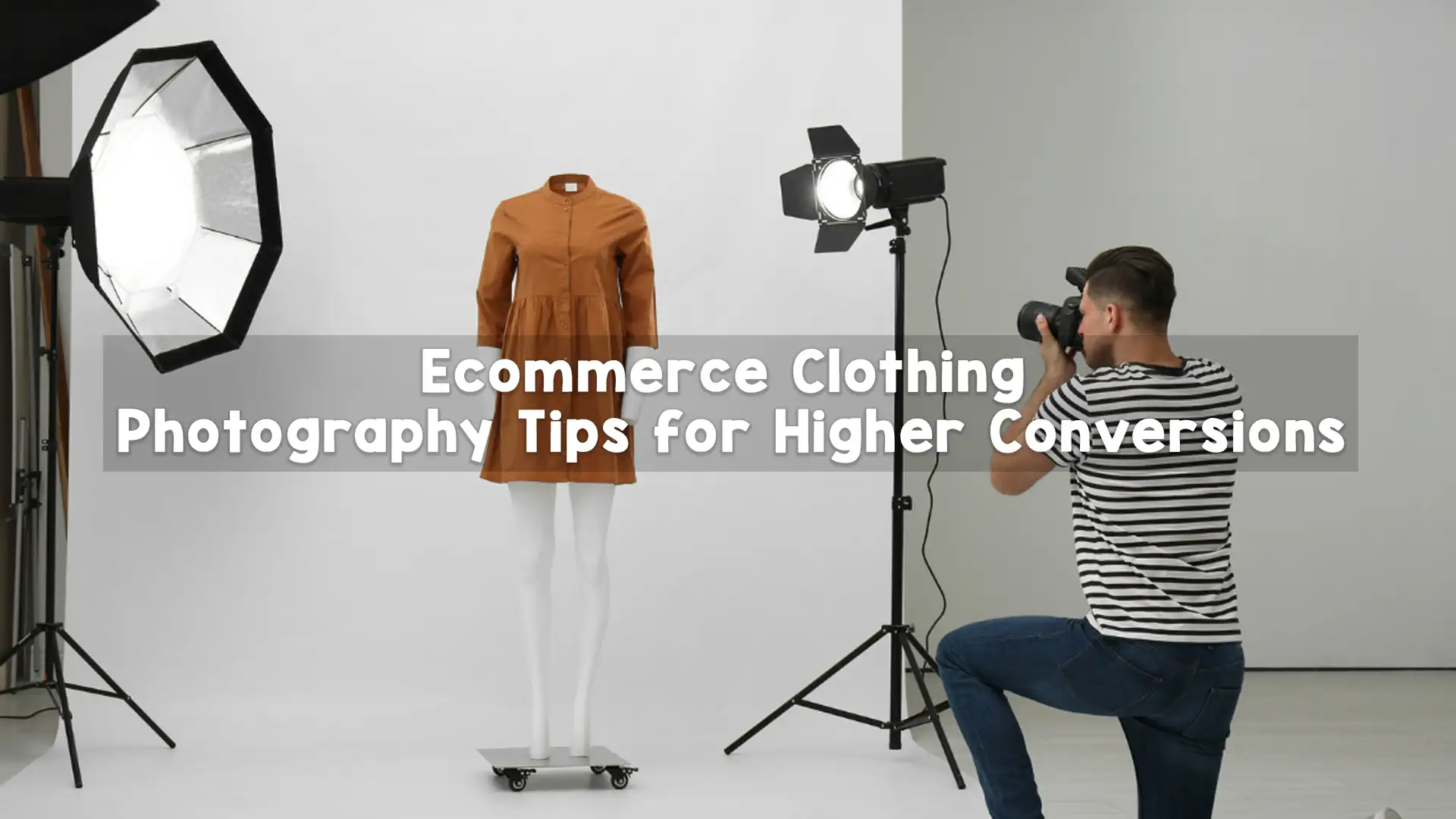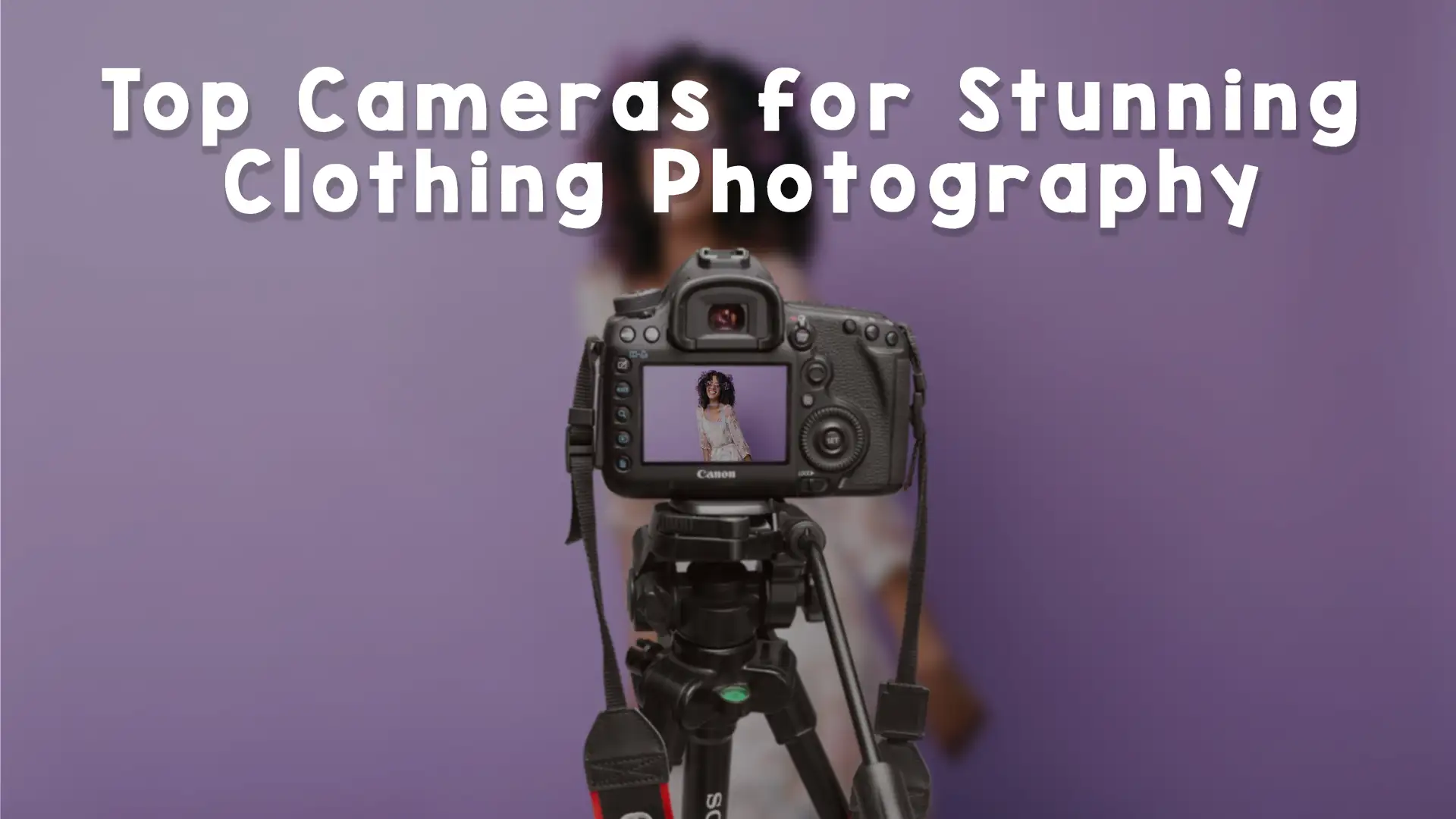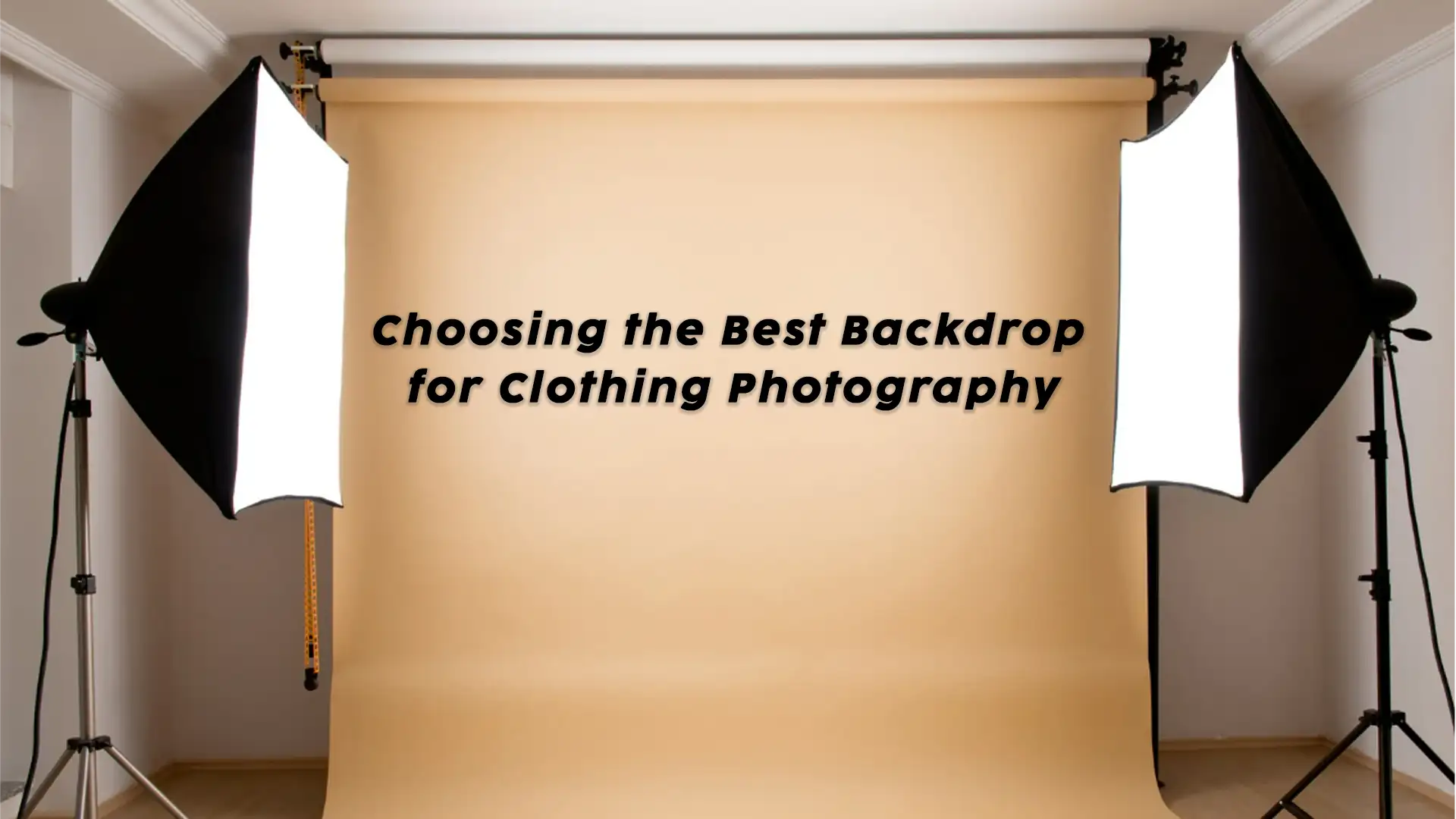Photographing clothes is an important part of showcasing any fashion brand or e-commerce store. But not every photoshoot involves a model. Sometimes, brands prefer to shoot their clothing products without a model due to budget, style, or creative direction. This approach is known as clothes photography without model, and it can be just as effective—if done correctly.
In this article, we will guide you step-by-step on how to photograph clothes without a model effectively. We will explore ten powerful techniques that help you make clothing items look attractive, clear, and ready to sell. Along the way, we will also share the pros and cons of this style and why it’s popular in both small and large fashion brands. In the end, we’ll show how Image Work India can help bring your photos to life with our post-production services.
What Is Clothes Photography Without Model?
Clothes photography without model is a method of capturing images of garments without using human models. Instead, the clothes are displayed using flat lays, hangers, mannequins, ghost mannequins, or digital design tools. The main goal of this photography style is to highlight the details, textures, and shape of the garment without the distraction of a model.
This type of photography is popular in online stores, fashion catalogues, and lookbooks. It gives designers and retailers full control over the look and feel of the product. It is also more cost-effective and faster compared to hiring a model for every shoot.
Why Choose Clothes Photography Without Model?
There are many reasons brands and photographers choose this approach. It can save time and money while also offering a clean, distraction-free image of the clothing item. Clothes photography without model works well for standard product listings, online marketplaces like Amazon, and brands that want a consistent look across all images.
Some clothing pieces—like basic t-shirts or pants—can look great when styled properly without a model. With the right lighting, layout, and editing, this method creates professional, high-quality images that sell.
10 Techniques for Photographing Clothes Without a Model
Let’s now explore ten powerful techniques to master clothes photography without model. Each method has its own advantages and challenges. Understanding these will help you choose the best option for your brand or business.
1. Flat Lay Photography – Tell a Story from Above
Imagine your clothes as characters in a scene. Flat lay photography lets you arrange them on a flat surface like a canvas, telling a visual story from a bird’s eye view. This method is perfect for outfits that include tops, bottoms, and accessories—because you can display them all together in a styled arrangement.
The trick is to keep the background clean—white works best—and make sure the fabric is steamed and carefully folded or fluffed to look natural. Add a few props like sunglasses or a coffee cup, and suddenly your clothing looks like it’s about to jump off the page into someone’s day. While flat lay is simple to set up, it requires an eye for composition. Balance, symmetry, and good lighting are key to making this style of clothes photography without model both effective and visually pleasing. It’s a perfect technique for brands that love minimalism and storytelling.
2. Hanging Garments – The Simplest Elegance
Sometimes the simplest setup speaks the loudest. Hanging garments against a blank wall or on a stylish clothing rack can create elegant, eye-catching images. This method works wonderfully when the goal is to show the natural fall and drape of the fabric. Use a padded or wooden hanger that complements the brand’s aesthetic—avoid wire hangers, which can cheapen the look.
A slight breeze from a fan can give life and movement to soft fabrics like cotton or chiffon. Position the hanger at the center and make sure the clothing is steamed to perfection. Natural light or soft studio lighting will help prevent harsh shadows. While it’s a quick method, remember that the clothing may lack shape unless styled with clips at the back. Still, it’s a classy and budget-friendly option for clothes photography without model, especially for online boutiques and sustainable fashion lines with a minimalistic vibe.
3. Using a Mannequin – Add Form Without a Face
A mannequin is your secret weapon when you need to show shape and style without a human presence. Clothes naturally look more appealing when they have structure, and a mannequin provides just that. Choose a mannequin that matches the mood of your brand—modern, vintage, or even abstract. Position your lights carefully to avoid casting strong shadows and to highlight important features like pleats, collars, or textures. Mannequins are especially useful for body-hugging dresses, suits, or garments with tailoring. This method lets customers imagine how the clothing might look when worn, without the distraction of facial expressions or model poses. Styling is key—make sure the fit looks natural and clean.
The main drawback is setup time, but once you have the lighting and positioning right, a mannequin gives you consistent results. It’s a go-to technique for e-commerce brands looking to combine elegance and consistency in their visual storytelling.
4. Ghost Mannequin – Magic Without a Model
The ghost mannequin technique is like fashion magic. You shoot the clothing on a mannequin, then remove the mannequin digitally in post-processing. The result? A floating, 3D image of the clothing that makes it look like it’s being worn by an invisible person. This is one of the most effective ways to showcase clothes photography without model, especially for fashion stores aiming for a premium, clean look. The process involves photographing the garment from multiple angles—front, back, and sometimes inside collars or cuffs. These images are later merged in editing software to create that seamless, hollow-body effect. The final image is professional, sleek, and puts full attention on the garment’s shape and fit.
While this method does require advanced photo editing, the investment pays off in striking images that boost online sales. This technique is widely used by major fashion retailers—and with expert editing from Image Work India, it’s easy to achieve.
5. 3D Clothing Photography – Rotate the Style
Think of 3D clothing photography as bringing fashion to life in the digital world. It captures every angle of a garment, allowing users to interact with the product—rotate it, zoom in, and explore details up close. This technique bridges the gap between in-store and online shopping by letting buyers “touch with their eyes.” Multiple cameras or a rotating platform are used to capture images from different perspectives, which are then stitched together using 3D software. The results are breathtaking, especially for high-end or uniquely designed items where every curve and stitch matters.
While this method is more technical and time-consuming, it delivers a modern, immersive shopping experience. For clothes photography without model, 3D imaging shows not just what the clothing looks like, but how it behaves—how it hangs, twists, and moves. It’s a powerful tool for brands that want to stand out in a crowded online marketplace.
6. Detail Close-Ups – Highlight the Craftsmanship
Sometimes, the magic lies in the smallest details. Detail close-ups allow you to showcase the quality and craftsmanship of your clothing—whether it’s the softness of a fabric, the elegance of a button, or the precision of a seam. These shots build trust. They whisper to customers, “Look how well this is made.” When photographing clothes without a model, detail close-ups are essential. Use a macro lens or a zoom function to get up close and personal. Make sure the lighting is soft and even, so it doesn’t cast harsh shadows on delicate textures.
This technique works best when combined with full-body or front-facing shots, giving a complete picture of the product. A viewer may be drawn to the shine of a zipper or the fine embroidery that sets your clothing apart. Detail close-ups not only enrich your visual content—they tell a story of quality that words can’t express.
7. Steaming and Styling – The Art of Fabric Preparation
Before the camera clicks, the clothes must shine—and that means perfect preparation. Steaming and styling are not photography techniques in the traditional sense, but they are essential to making any of the other techniques successful. Wrinkles, creases, and uneven fabric can ruin even the most beautifully lit photo. Steaming softens the material, while styling tools like clips, pins, and even tissue paper help give the garment a more realistic shape. This is especially helpful for loose or baggy items that may look lifeless on a hanger or flat lay.
In clothes photography without model, the fabric itself becomes the star. And like any star, it needs to look its best. Styling is your behind-the-scenes effort that ensures the final photo is picture-perfect. Think of it as the makeup artist in your fashion shoot—it’s invisible in the final image, but essential for a flawless result.
8. Natural Light Photography – Let the Sun Work for You
There’s something refreshing and honest about natural light. It’s soft, forgiving, and brings out the true colors of fabric without making them look artificial. For clothes photography without model, using natural light—especially near a large window or outdoors on a cloudy day—can create stunning, magazine-quality images without fancy equipment. The key is timing and location. Morning or late afternoon light gives a warm, balanced tone. Position the garment so light falls evenly across it, and use reflectors to soften any shadows.
This technique is great for flat lays, hanging shots, and styled setups on tables or beds. Natural light gives a sense of realism, making clothes look wearable and approachable. It also saves money and is perfect for small businesses or home studios. Just remember: natural light can change quickly, so be ready to shoot when the lighting is just right.
9. Studio Lighting Setup – Control Every Shadow
If natural light is art, studio lighting is science. It allows total control over every element of your photo—brightness, shadows, highlights, and color temperature. For professional-looking clothes photography without model, a well-planned studio setup is unbeatable. Softboxes create even lighting, while backdrops help keep the focus on the garment. You can eliminate distractions, control reflections, and bring out every thread of detail. Whether you’re using mannequins or hangers, studio lighting ensures consistency across a full catalog. It’s especially useful for fashion brands that need large batches of photos to look uniform.
This method also allows you to experiment with creative setups—backlighting for sheer fabrics or side lighting for textures. Although setting up a studio requires time and investment, the results are polished and print-ready. With the right gear and a bit of practice, you’ll soon be creating showroom-quality images straight from your home or studio.
10. Professional Post-Processing – The Finishing Touch
Even the best photos need a little polish. Professional post-processing is what turns a good image into a stunning one. It’s the final and most important step in clothes photography without model. From background removal and wrinkle correction to ghost mannequin effects and color correction, editing shapes the final impression your image leaves. It ensures consistency across your product listings and meets marketplace standards like white backgrounds and high resolution.
At Image Work India, we specialize in this craft. Our expert editors clean up stray threads, fix folds, enhance textures, and make colors pop—so your garments look as vibrant on-screen as they do in real life. Post-processing not only saves time but adds a level of finesse that customers expect from top brands. If you want your clothing images to look flawless and professional, this is the step that makes all the difference.
Pros and Cons of Clothes Photography Without Model
Like any photography style, clothes photography without model has its strengths and limitations. One big advantage is that it is budget-friendly. You don’t need to hire a model or makeup artist, and you have complete control over the clothing’s appearance.
It also gives a clean, minimalistic style that many e-commerce brands prefer. Flat lays and ghost mannequins are highly effective for product listings because they keep the focus on the garment.
However, the lack of a human model can make it harder for customers to imagine how the clothes will fit. It also takes more effort to make the garments look lively and natural. That’s why styling, lighting, and editing play a big role in this process.
Tips to Make Your Photography Even Better
No matter which technique you choose, make sure the clothing is clean, steamed, and shaped properly before the shoot. Use a tripod for steady shots, and try to keep the camera angle consistent across all products. If possible, shoot in RAW format for better editing options later.
You should also pay attention to your background. A plain white background is preferred for most product shots, especially on e-commerce platforms. Make sure shadows are soft, and colors are true to the original garment.
Using a high-resolution camera and editing software can also help in capturing every detail. You want your potential buyers to feel confident about what they are seeing online.
Why Choose Image Work India for Post-Production?
At Image Work India, we specialize in photo post-production services that support your clothes photography without model projects. Whether you shoot flat lays, use mannequins, or need ghost mannequin effects, our expert team can help.
Our services include:
- Background removal and replacement
- Ghost mannequin editing
- Wrinkle and spot retouching
- Color correction and enhancement
- Shadow creation
- Image resizing for web and print
We understand the needs of fashion photographers, online retailers, and clothing brands. With years of experience, fast turnaround, and affordable pricing, Image Work India is your perfect partner for making your clothing photos look professional, stylish, and ready to sell.
Final Thoughts
Clothes photography without model is a smart and efficient way to present fashion items. Whether you’re a small business owner or a professional photographer, using techniques like flat lays, ghost mannequins, or studio setups can help you produce high-quality images. While it comes with its own set of challenges, the benefits are many—especially when combined with expert post-production services.
By applying the right methods and paying attention to detail, your clothes will stand out even without a model. And when it’s time to retouch, resize, or enhance your photos, let Image Work India help bring your vision to life.




